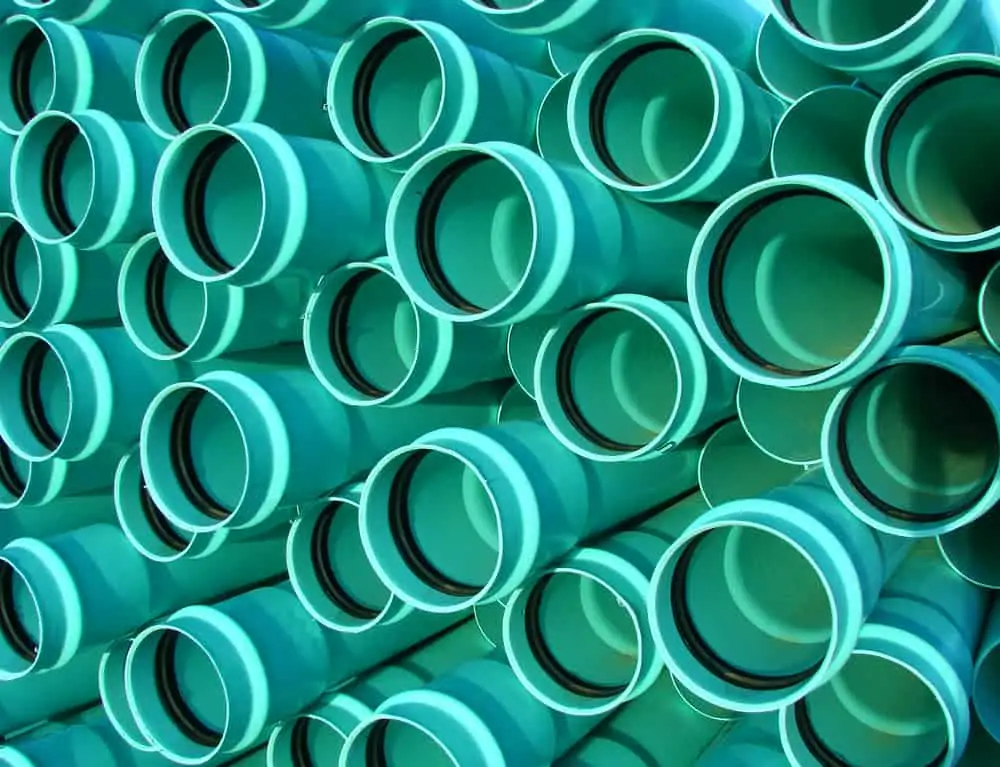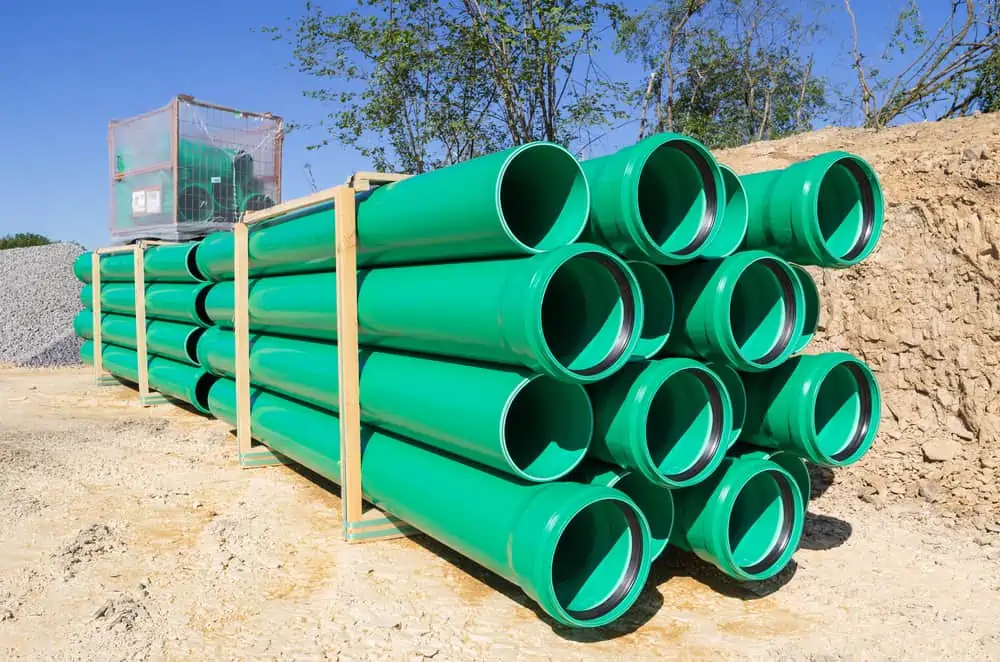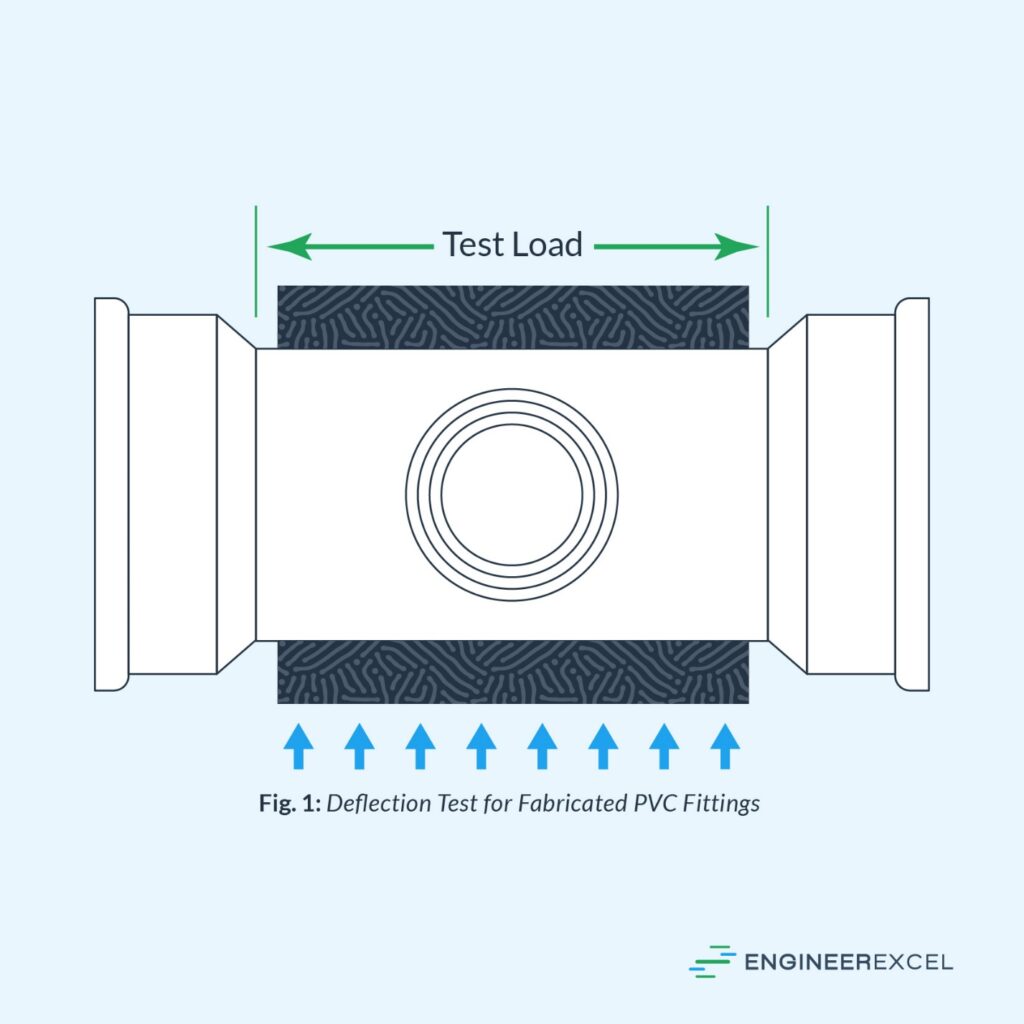ASTM Standard D 3034 lays out specifications for Polyvinyl Chloride (PVC) pipe and fittings used for sewer and storm drain purposes. This type of pipe connects to the outlet of a building or other structure and carries storm water or sewage to a sewer or drainage outflow.
ASTM D3034
Piping meeting this standard is used in non-pressurized, gravity driven flow. All pipes and fittings must be joined with either solvent cementing or with gasketed connections.
Like many ASTM standards, it is intended to be used by manufacturers to ensure their product conforms to desired requirements of dimensions, strength, and workmanship. The standard also specifies testing methods and requirements so quality control can be assured.

ASTM D 3034 specifies a variety of dimensions, material properties, and testing requirements. The document is arranged in the following sections:

Elevate Your Engineering With Excel
Advance in Excel with engineering-focused training that equips you with the skills to streamline projects and accelerate your career.
Part 1: Scope
The scope of the specification is defined in this section. ASTM D 3034 outlines the requirements and testing methods for:
- Pipe materials
- Final product dimensions
- Workmanship and extrusion quality
- Resistance to flattening, crushing, and impact
- Pipe stiffness
- Joint structure and joining methods
- Product markings
Part 2: References
This section of the standard lists other ASTM documents that are referenced in this standard, or that may contain valuable information related to this topic.
Part 3: Terminology
Because ASTM D 3034 is a relatively simple standard, this section is short. The term “PSM” is a commonly used abbreviation for this type of piping meaning “Plastic Sewer Main.”
Part 4: Significance and Use of ASTM D3034
This standard is limited to piping and fittings that drain sewage and surface water under non-pressurized (gravity driven) flow. A note states that local code enforcement must approve of any use for industrial waste transfer because elevated temperatures or corrosive chemicals may be encountered.
Part 5: Basic Materials
The standard references specific PVC material requirements noted in another specification, ASTM D 1784.

Part 6: Joining Systems
ASTM D 3034 requires that all pipe joints must be either solvent cemented or elastomeric gasketed joints. Solvent cement joints must be spigot and socket type. The socket may be formed as a belled end of pipe, rather than an independent fitting. Regardless of joint type, it must be leak tight.
Part 7: ASTM D3034 Requirements
The requirements section is the heart of the document and is broken into topics.
Workmanship
The pipe material must be homogenous, meaning the material is solid and uniform throughout. No cracks, holes, or impurities are permitted. Other standards outlining PVC pipe material requirements state that virgin material must be used, in part to ensure these properties.
Pipe Requirements
This section tabulates dimensional requirements such as outside diameter and minimum wall thickness for SDR 41, SDR 35, SDR 26, and SDR 23.5. Pipe impact strength and stiffness requirements are also tabulated.
Pipe Dimensions
Minimum Impact Strength @ 73°F
Minimum Pipe Stiffness at 5% Deflection
Requirements for Solvent Cemented Pipe and Fittings
Joint dimensions are specified to ensure that all pipes meeting this standard can be interchanged regardless of production lot or manufacturer.
Fabricated Fittings
General requirements for the construction and dimensions of fittings are listed. A specific testing procedure for completed joints is defined. In this test, a prescribed load is placed on the joint to deflect the fitting. After a loaded time of 5 minutes, the joint is pressure tested for 10 minutes to verify that it is leak-tight. A note states that the testing procedure is to verify fabrication quality and does not require testing all fittings delivered.

Solvent Cement
The solvent cement must meet requirements laid out in ASTM D 2564. This requirement ensures that testing in accordance with this document is performed with a known strength of joint.
Requirements for Pipe and Fittings with Elastomeric Gasket Joints
As with solvent cemented joints, requirements for gasketed joints are specified.
Part 8: Test Conditions
To ensure that manufacturers can test their products in a standardized method, the document details testing conditions and processes.
Environmental conditions of temperature and humidity are given. Instructions give directions and measurement tool requirements for verifying diameter, wall thickness, and socket depth.
Processes to determine pipe flattening, impact resistance, and pipe stiffness are detailed. Fittings are tested for joint tightness by hydrostatic pressure test.
The material quality of the pipe is tested by immersion in anhydrous acetone, which will determine if the extrusion which forms the pipe has been properly fused.
Part 9: Inspection
The standard has no specific inspection requirements, stating that material shall be inspected in accordance with a purchase contract.
Part 10: Retesting and Rejection
If any tests outlined in the specification fail, the material may be retested. If the retest fails, the quality of the material is assumed to not meet specification requirements. It is noted that the minimum requirements cannot be lowered to pass suspect material.
Part 11: ASTM D3034 Certification
When required by a purchase contract, the manufacturer’s certification must include specific information in a test result report.
Part 12: Marking
Pipe meeting the requirements of this standard must be marked at intervals of 5 feet or less with the following information:
- Manufacturer name, trademark, or code.
- Nominal Pipe Size
- PVC material classification
- Specific pipe dimension (analogous to schedule in other PVC pipes) such as SDR-35.
- The specification to which the pipe was manufactured (ASTM D3034)

Part 13: Quality Assurance
To mark piping products with ASTM D 3034, the manufacturer agrees that all requirements outlined above have been met.
Part 14: Supplementary Requirements for Government/Military Procurement
This section contains additional requirements related to government contracts. A disclaimer states that this section does not mean that the government uses or endorses this specification.
In the case of federal contracts, the contractor will be responsible for inspection. The significance of this additional requirement is that the contractor becomes responsible as an additional check on the quality of the product.
Another difference for government procurement is that the markings must also conform to specified federal or military requirements.
Appendixes
Appendixes to the specification include information regarding deflection limits outlined in calculations and tables.
Diagrams showing pipe fitting dimensions are provided for bends, tees, crosses, and wyes. A note clarifies that these are meant to show common dimensions, but individual manufacturers may provide products with different sizes. Because pipe dimensions are defined earlier in the document, fittings from any manufacturer will fit pipe from any other manufacturer.
Other Specifications
Before ASTM D 3034, specification ASTM D 3033 was in use. This earlier document, which was removed in 1987, described piping known as PSP or Plastic Sewer Pipe.
